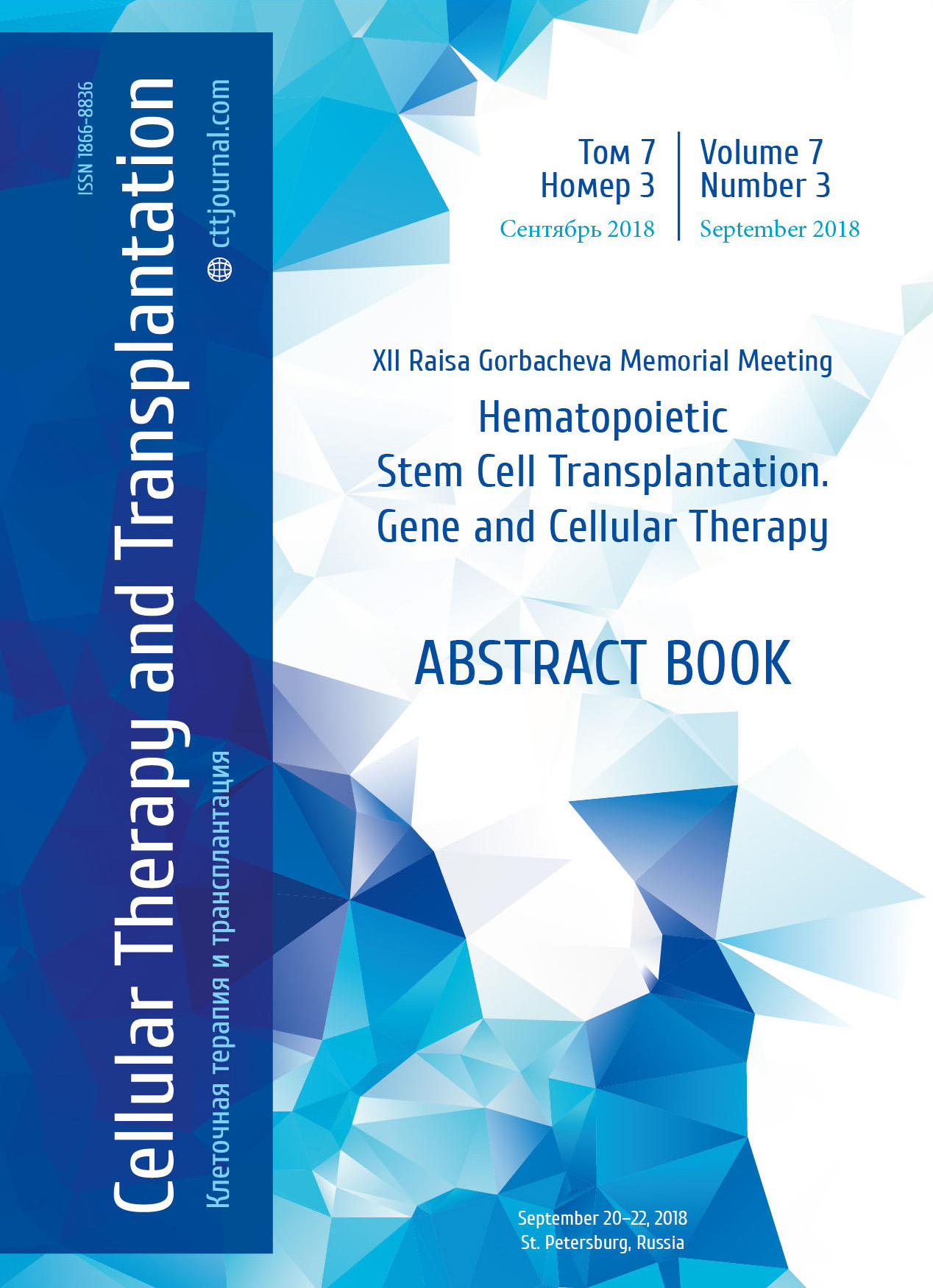Candidemia in hematological patients after hematopoietic stem cell transplantation
2 I. I. Mechnikov North-Western State Medical University, St. Petersburg, Russia
Summary
Introduction
Invasive candidiasis/candidemia is a rare invasive fungal disease, however, associated with high mortality rates in hematological patients. Candidemia has been observed particularly among patients hospitalized for a long periods who have been on chemotherapy, including hematopoietic stem cell transplantation (HSCT). The aim of our study was to estimate epidemiology of candidemia in large HSCT recipients’ cohort for the 10-year period transplant activity in R. Gorbacheva Memorial Institute of Children Oncology, Hematology and Transplantation of First Pavlov State Medical University of St. Petersburg.
Patients and methods
2430 stem cell transplantations have been performed at our BMT center (CIC 725) between 2008 and 2017 including 1647 allogeneic and 783 autologous HSCTs. A retrospective study included 26 cases of candidemia in the period of time in patients with hematological malignances and non-malignant hematological diseases after HSCT. EORTC/MSG 2008 criteria were used for the diagnosis of proven candidemia as well as to evaluate response to therapy.
Candida etiology

Figure 1. Etiology of candidemia in patients following
hematopoietic transplantation
Results
Incidence of candidemia for the 10-year period of high transplant activity was 1%: 1.2% in allo-HSCT recipients (n=20/1647), 0.7%, in auto-HSCTs (6/783). The most frequent underlying diseases were acute leukemias (65%, n=17). The median age was 10 y.o. (range, 1 month to 59 years). In the study population, allo-HSCT from unrelated donors was performed in 50% (n=13); haplo-HSCT, in 26% (n=7), and auto-HSCT, in 24% (n=6). Patients had no complete remission at the moment of HSCT in 27% (n=7). As a primary antifungal prophylaxis, the patients received fluconazole (35%, n=9); echinocandins (15%, n=4). 6 patients (23%) were without specific prophylaxis, and voriconazole was applied as secondary prophylaxis in 27% (n=7). The median term for candidemia registration was 109 days after allo-HSCT (range, 3 to 1337) versus 20 days after auto-HSCT (range, 8-33). Candida parapsilosis was the main pathogen revealed (38% of the cases). Spectrum of different Candida species found is shown in Fig. 1. Febrile fever was the main clinical symptom, whereas septic syndrome developed in 60% of cases. Overall survival (OS) at 30 days from the diagnosis of candidemia was 65%. OS at 30 days in patients with echinocandins as antifungal therapy in first line was 100%, versus 65% in cases with other therapies (p=0.09). Removal of central venous catheter (CVC) was the only factor that significantly improved OS at 30 days after candidemia diagnosis (91% vs 17%, p=0.001).
Conclusions
Incidence of candidemia over 10 years of observation was 1%: 1.2% in allo-HSCT recipients, 0.7% after auto-HSCT. Overall survival at 30 days from the diagnosis of candidemia was 65%. Removing the central venous catheter caused OS improvement in hematological patients with candidemia.
Keywords
Candidemia, hematological patients, hematopoietic stem cell transplantation, high-dose chemotherapy, incidence, overall survival, echinocandins, central venous catheter (CVC).


